Preview of the new Kawasaki Z650 ABS
Latest addition to the “Zed” family
Adapted from Kawasaki Motors (Malaysia) Media Release
Pictures by Kawasaki Motors (Malaysia)
- The Z650 is the all-new replacement for the Er-6n.
- New engine, frame and bodywork.
- More compact and lightweight.

The Kawasaki ER-6n was arguably the most popular naked “big bike” (above 500cc) in Malaysia of any brand and model, and we could still see many units running on our roads on a daily basis.
Well, Kawasaki has gone and made the model even better with a completely new model for 2017. The Japanese manufacturer has also given the model the coveted “Z” name for its inclusion into their naked motorcycle line-up, which includes the Z250SL, Z900, Z1000, Z1000SX.
Now called the Z650, it returns to set mid-weight naked class alight. Light, nimble and eye-catching, the new Z650 enjoys stunning looks thanks to its unique Kawasaki Sugomi design influences while lusty performance and impressive torque are willingly delivered by the compact 650cc parallel-Twin, water-cooled engine. The newest addition to Kawasaki’s Z Supernaked Series features an all-new lightweight chassis in a slim, compact middleweight package.

The Z650’s nimble handling, superb feedback and strong acceleration are complemented by easy-to-manage power delivery and rider-friendly manoeuvrability, offering an ideal blend of sporty performance and everyday versatility that’s sure to satisfy everyone from new to more experienced riders.
To maximise performance for everyday riding, care was taken to maximise low to midrange torque. When opening the throttle, riders will notice an extremely smooth and powerful engine character that offers both a high level of control when making minute throttle adjustment and gratifying rush of acceleration in the lower rpm ranges. The new liquid-cooled, DOHC, 8-valve, 649cc, parallel-Twin engine with fuel injection delivers smooth, responsive performance, especially in the low and medium rpm ranges. The power delivery is very smooth below 3,000 rpm while the power and torque rises without dropping above 6,000 rpm. The strong low-end focus lends itself to sporty riding, but also translates to rider- friendly power characteristics that facilitate control and inspire confidence in new riders.
One of the key components to realising the new Ninja 650’s lighter weight is the all-new trellis frame. The trellis frame weights only 15kg and contributes significantly to the bike’s light, nimble handling. Components of the high-tensile trellis frame follow the ideal pipeline. The lines of the frame were made as straight as possible and when bends were necessary their angles were made as small as possible, resulting in a design that disperses stress extremely well.

Sudden over-application of the brakes or braking on low-grip surfaces (surfaces with a low coefficient of friction) such as wet asphalt or manhole covers may cause a motorcycle’s wheel(s) to lock up and slip. ABS was developed to prevent such incidents. Kawasaki ABS systems are controlled by high precision and highly reliable programming formulated based on thorough testing of numerous riding situations. By ensuring stable braking performance, they offer rider reassurance that contributes to greater riding enjoyment. And to meet the special requirements of certain riders, specialised ABS systems are also available. For example, KIBS (Kawasaki Intelligent anti-lock Brake System) is a high-precision brake system designed specifically for supersport models, enabling sport riding to be enjoyed by a wider range of riders. And by linking the front and rear brakes, K-ACT (Kawasaki Advanced Coactive-braking Technology) ABS provides the confidence to enjoy touring on heavyweight models. Kawasaki is continually working on the development of other advanced ABS systems.
Compared to Kawasaki’s traditional Uni-Trak rear suspension, which mounts the shock unit vertically, with Horizontal Back-link rear suspension, the shock unit is almost horizontal. Kawasaki’s original suspension arrangement locates the shock unit very close to the bike’s centre of gravity, greatly contributing to mass centralisation. And because there is no linkage or shock unit protruding beneath the swingarm, this frees up space for a larger exhaust pre-chamber (an exhaust expansion chamber situated just upstream of the silencer). With a larger pre-chamber, silencer volume can be reduced, and heavy exhaust components can be concentrated closer to the centre of the bike, further contributing to mass centralisation. The result is greatly improved handling. Another benefit is that the shock unit is placed far away from exhaust heat. Because it is more difficult for heat from the exhaust system to adversely affect suspension oil and gas pressure, suspension performance is more stable. Horizontal Back-link rear suspension offers numerous secondary benefits like this.

Based on feedback from racing activities, the Assist & Slipper Clutch uses two types of cams (an assist cam and a slipper cam) to either drive the clutch hub and operating plate together or apart. Under normal operation, the assist cam functions as a self-servo mechanism, pulling the clutch hub and operating plate together to compress the clutch plates. This allows the total clutch spring load to be reduced, resulting in a lighter clutch lever feel when operating the clutch. When excessive engine braking occurs – as a result of quick downshifts (or an accidental downshift) – the slipper cam comes into play, forcing the clutch hub and operating plate apart. This relieves pressure on the clutch plates to reduce back-torque and helps prevent the rear tyre from hopping and skidding.

Late-model sport bikes often use large-bore throttle bodies to generate high levels of power. However, with large diameter throttles, when a rider suddenly opens the throttle, the unrestricted torque response is anything but gentle and often more than the rider can handle. Dual throttle valve technology was designed to tame engine response while contributing to performance. On fuel-injected models, throttle bodies generally have only one throttle valve per cylinder. On models with dual throttle valves, there are two throttle valves per cylinder: in addition to the main valves, which are physically linked to the throttle grip and controlled by the rider, a second set of valves, opened and closed by the ECU, precisely regulates intake airflow to ensure a natural, linear response. With the air passing through the throttle bodies becoming smoother, combustion efficiency in improved and power is increased. Like other Kawasaki engine management technology, Dual Throttle Valves were designed with the philosophy of “following the rider’s intention, while providing natural-feeling support.” They are featured on many Kawasaki models.
Using high-precision electronic control for engine management, Kawasaki models can achieve a high level of fuel efficiency. However, fuel consumption is greatly affected by throttle use, gear selection, and other elements under the rider’s control. The Economical Riding Indicator is a function that indicates when current riding conditions are consuming a low amount of fuel. The system continuously monitors fuel consumption, regardless of vehicle speed, engine speed, throttle position and other riding conditions. When fuel consumption is low for a given speed (i.e. fuel efficiency is high), an “ECO” mark appears on the instrument panel’s LCD screen. By riding so that the “ECO” mark remains on, fuel consumption can be reduced. While effective vehicle speed and engine speed may vary by model, paying attention to conditions that cause the “ECO” mark to appear can help riders improve their fuel efficiency – a handy way to increase cruising range. Further, keeping fuel consumption low also helps minimise negative impact on the environment.

Wide, flat handlebar and a relaxed, sporty riding position that allows to fully capitalise on the Z650’s sporty street riding potential. The ninja 650’s upright position and fine-tuned rider triangle offer both control and comfort. Thanks to the low seat and the bike’s overall slim design, it’s easy to keep feet firmly on the ground wen stopped. An important consideration for many riders. 790mm sear height accommodates riders spanning a wide range of heights, enabling them to ride with confidence. Separate, raised handle bars mounted to the upper triple clamp contribute to the bike’s sporty looks. Offering both control and comfort, putting the rider in good position for sport riding.
Please follow Kawasaki Motors (Malaysia) Sdn. Bhd.’s Facebook and webpage for more information.
TECHNICAL SPECS
| ENGINE | |
| Engine type | Liquid-cooled, 4-stroke, DOHC, 8-valves, parallel-Twin |
| Compression ratio | 10.8 : 1 |
| Bore X Stroke | 83.0 mm X 60.0 mm |
| Displacement | 649 cc |
| Fuel system | Fuel injection, 38 mm throttle body with dual throttle valves |
| Maximum power | 67.3 bhp (50.2 kW) @ 8000 RPM |
| Maximum torque | 65.7 Nm @ 6500 RPM |
| CHASSIS | |
| Front suspension | 41 mm telescopic forks |
| Rear suspension | Horizontal Back-link, adjustable for preload |
| Front brakes | Dual semi-floating 300 mm petal discs, two-piston calipers |
| Rear brake | Single 220 mm petal disc, single-piston caliper |
| FRAME & DIMENSIONS | |
| Frame | Trellis, high-tensile steel |
| Trail | 101 mm |
| Front wheel travel | 120 mm |
| Rear wheel travel | 130 mm |
| Wheelbase | 1410 mm |
| Ground clearance | 130mm |
| Seat height | 790 mm |
| L x W x H | 2065 mm x 775 mm x 1080 mm |
| Curb weight | 187 kg |
| Front tyre | 120/70-ZR17 (58W) |
| Rear tyre | 160/60-ZR17 (69W) |
| Fuel capacity | 15 litres |

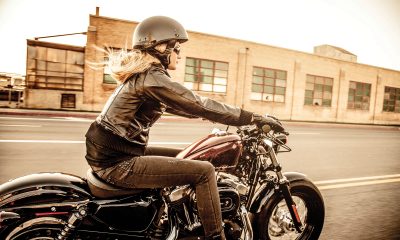
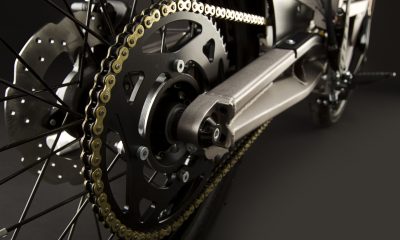





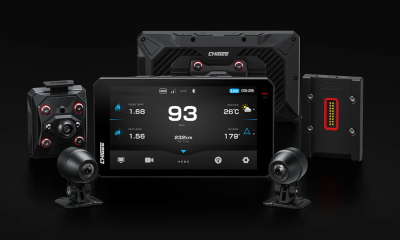
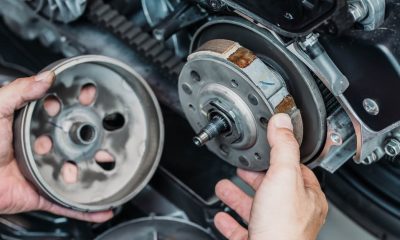

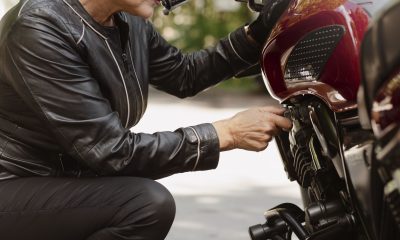

















Facebook
Instagram
X (Twitter)
YouTube
LinkedIn
RSS